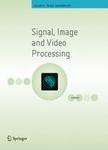版权所有:内蒙古大学图书馆 技术提供:维普资讯• 智图
内蒙古自治区呼和浩特市赛罕区大学西街235号 邮编: 010021

作者机构:Zhejiang A&F Univ Sch Math & Comp Sci Hangzhou 311300 Peoples R China Zhejiang Prov Key Lab Forestry Intelligent Monitor Hangzhou 311300 Peoples R China Zhejiang Univ Coll Informat Sci & Elect Engn Hangzhou 310027 Peoples R China State Key Lab CAD & CG Hangzhou 310027 Peoples R China
出 版 物:《SIGNAL IMAGE AND VIDEO PROCESSING》 (Signal Image Video Process.)
年 卷 期:2024年第18卷第12期
页 面:8739-8756页
核心收录:
学科分类:0808[工学-电气工程] 1002[医学-临床医学] 0809[工学-电子科学与技术(可授工学、理学学位)] 08[工学]
基 金:Zhejiang Provincial Natural Science Foundation of China [LY24F020005]
主 题:Remote sensing Scene classification Local feature fusion Position enhancement Attention mechanism
摘 要:Remote sensing scene classification is a critical task in the processing and analysis of remote sensing images. Traditional methods typically use standard convolutional kernels to extract feature information. Although these methods have seen improvements, they still struggle to fully capture unique local details, thus affecting classification accuracy. Each category within remote sensing scenes has its unique local details, such as the rectangular features of buildings in schools or industrial areas, as well as bridges and roads in parks or squares. The most important features are often these rectangular structures and their spatial positions, which standard convolutional kernels find challenging to capture *** address this issue, we propose a remote sensing scene classification method based on a Rectangle Convolution Self-Attention Fusion Network (RCSFN) architecture. In the RCSFN network, the Rectangle Convolution Maximum Fusion (RCMF) module operates in parallel with the first 4 x 4 convolutional layer of VanillaNet-5. The RCMF module uses two different rectangular convolutional kernels to extract different receptive fields, enhancing the extraction of shallow local features through addition and fusion. This process, combined with the concatenation of the original input features, results in richer local detail ***, we introduce an Area Selection (AS) module that focuses on selecting feature information within local regions. The Sequential Polarisation Self-Attention (SPS) mechanism, integrated with the Mini Region Convolution (MRC) module through feature multiplication, enhances important features and improves spatial positional relationships, thereby increasing the accuracy of recognising categories with rectangular or elongated features. Experiments were carried out on AID and NWPU-RESISC45 data sets, and the overall classification accuracy was 96.56% and 92.46%, respectively. This shows that the RCSFN network model proposed in t